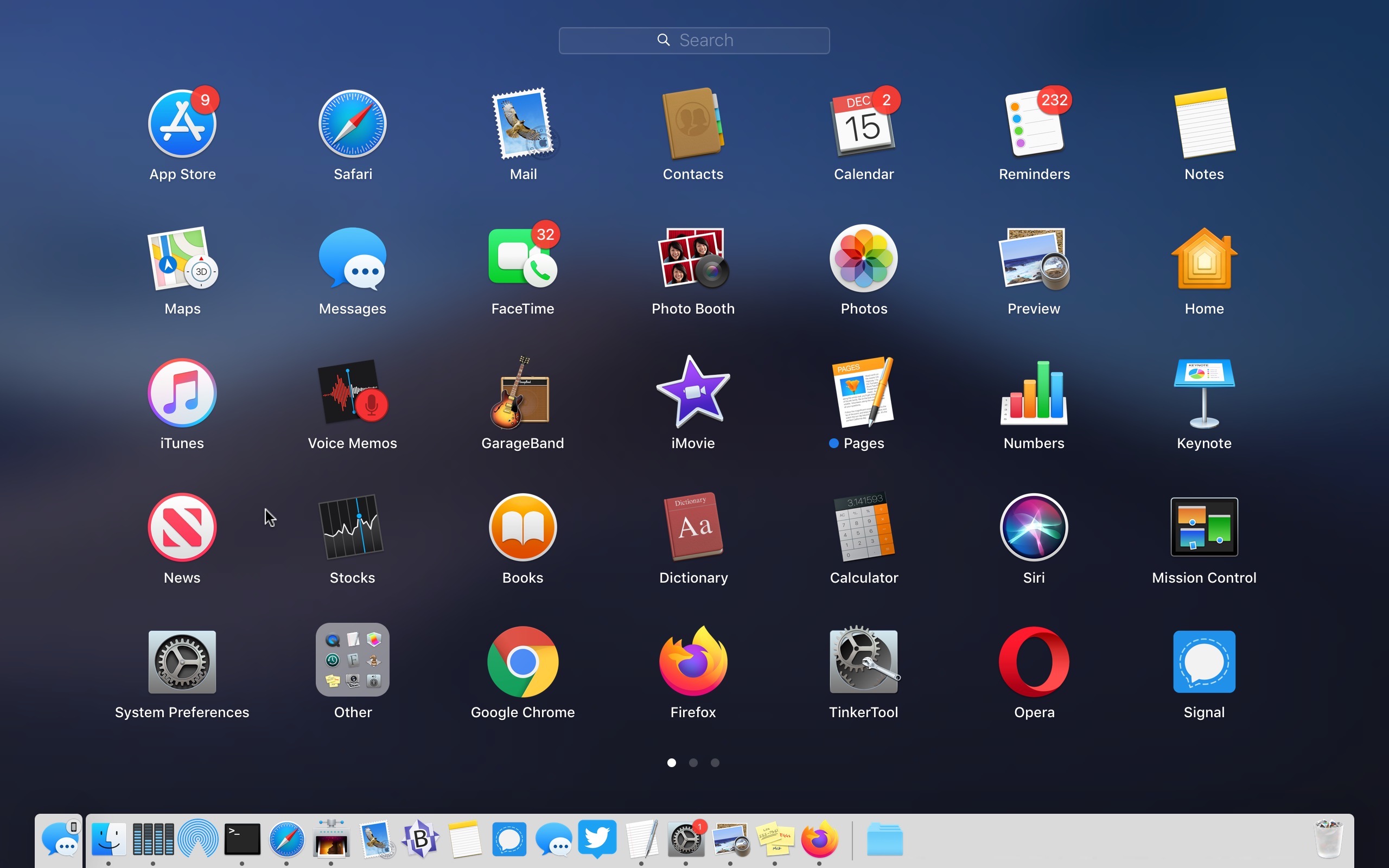Source https://blogs.sap.com/2020/01/23/my-experience-with-fiori-launchpad-content-manager-the-after-story-of-fiori-rapid-activation/
Launchpad Mini is our most compact and portable 64 RGB pad MIDI grid controller. It gives you everything you need to start performing in Ableton Live - and it'll fit in your bag. Start making and performing tracks with Ableton Live wherever you are, using the huge array of sounds in the box to get you started. If you already use systems like i-View, you'll use the same password for the Launchpad applications. The password is a minimum of twelve characters and requires any three of the following four constraints: at least one upper case letter, at least one lower case letter, at least one number, at least one special character (e.g. $,!, #,., @,%).
common of them was, ‘
 How can we specify, that only selective Fiori apps will be available in the Fiori launchpad?‘
How can we specify, that only selective Fiori apps will be available in the Fiori launchpad?‘Well this is a valid question, because with Rapid activation, we activate all the apps linked to a Business role. Hence if we choose approx. 20 Business roles, then we would end up with around 300 apps. Off-course all the apps are not always required.
Here comes the Fiori Launchpad Content Manager tool, as a savior.
I first read about this tool from the wonderful blog posts of Sibylle Brehm and the LinkedIn posts from Jocelyn Dart. Drivers olympus others.
(Psst… If you think this is going to replace Fiori Launchpad Designer, then you are not the only one. )
In this post I would like to share my experience with this tool.
The Transaction

The Content manager is accessible from the transaction, /UI2/FLPCM_CUST and /UI2/FLPCM_CONF for customization and configuration layer respectively.(Similar to launchpad Designer)
Preparing a Custom Catalog
After I activated approximately 500 odd applications in my system, I had to filter out the access for the end user. Hence out of principle I had to create custom catalogs and roles.
Well we still need to create PFCG roles like the old process.
But now we can efficiently and quickly create a custom catalog suitable for our Fiori needs,
We can also create a blank custom catalog and then add references of all the required tiles one by one, just like in the launchpad Designer.
But also in this tool, we can create a copy of a standard catalog. (That’s the path I took.)
We just need to put the name of the standard catalog in the Search field (in this case we use, SAP_PS_BC_PROJ_FIN_CONTRL)
Click on the copy button, and put a Z name to the new custom catalog.
This activity will be recorded in a customizing Transport Request.
Now we have a custom catalog with all the Tiles and target mappings from the standard catalog.

Now we need to do a simple pick and choose exercise. ?
(But Before you indulge in this exercise, please read the important advisory from Jocelyn, in the comment section of this blog.)
We need to select the application Tiles which are NOT required for your project, and then click on the ‘Remove Tiles/Target Mappings’ button.
Thus at the end of this Exercise you have a custom catalog with only the required application Tiles for your project.
Checking Services
Now that we have our custom catalog, we should check if all the services for the content applications are successfully activated in the system.
This can also be easily achieved by simply clicking a button. ?
To perform a complete checkup, select the option ‘Check Services for all Objects’.
The result of the check, will be displayed in the column ‘Service Activation Status’. Nec mice & touchpads driver download for windows 10.
We can offcourse set a filter on the Service Activation Status column, to filter out the list of failed services Applications, and then investigate the reason for their failure separately.
OData service Failure
As I said in my previous blog, DO NOT PANIC!! when you see the color Red .
In most cases, you will successfully be able to activate these services manually.
For more detailed investigation steps for OData Service failure, you can refer to my previous blog.
Catalog Assignment
When we have an all green status for all application Tiles in our custom catalog, Its time to assign it to a role.
This part is exactly the same as before.
We need to go to the transaction PFCG,
Open the Z role and add the custom catalog to the Role Menu of the Role.
Save the role, and then generate the authorization profile.
Launchpad Manager Mac
While generating the auth profile for the custom role, a wizard automatically pops up, where the respective authorizations for the relevant authorization object’s org level of the added catalog should be provided.
And that’s it!!
Launchpad Manager Key
We should now assign this custom role to the end user, and therefore they will get access to only some filtered apps. (And No one’s even gonna know you activated a lot more than meets the eye! ? )
Useful Tips and Tricks
At some point of your project, you might be asked questions such as,
- How many Apps Do we Have in the system?
- Which catalog is assigned to which role?
These can be answered efficiently through FLPCM.
How many Apps Do we Have in the system?
In the Content Manager, we need to go to the Tiles and Target Mappings tab, and Check service activation for all objects, as described before.
Then add the following filters,
‘Tile/Target Mapping Matching Text’ as ‘Tile + TM’
‘Service Activation’ as Green
This would generate all objects that has a Tile and Target mapping and have a successfully activated service.
This would return the list of all successfully activated apps in the system.
This list can also be exported in a xlsx file,
Which catalog is assigned to which role?
This can also be easily answered in the content manager.
Simply in the Catalog tab, we need to select the catalog for which we need this answer, and then click on the button ‘Show usage in Roles’
This would show all the roles which contain this catalog.
These features also comes handy during error investigation.
To learn about some more cool features of the content manager, refer to the blog by Sibylle Brehm
My Inference
From my experience with both the Launchpad Designer and the Content Manager, I drew out the following conclusion.
- The performance of Content Manager is much robust and stable as compared to that of Launchpad Designer. (I think we have all been annoyed when it took a while for the Catalog list to appear, while creating a Tile reference in the Launchpad Designer. ? And impatient developers like me, would end up clicking on a different catalog than required.)
- I still feel that the look of Launchpad Designer is more modern and Fiori like, also since you can access it from your browser.
- Unfortunately we still cant create custom Groups in the Content Manager, hence Launchpad Designer is still the only option here.
But Overall, with the modern tools like Rapid activation for Fiori and the Fiori Launchpad Content Manager, the total effort required for a Fiori landscape setup has reduced significantly, and its a lot more FUN ?
At a glance
Cons
Our Verdict
Editor’s note: The following review is part of Macworld’s GemFest 2013. Every day (except Sunday) from mid-July until late September, the Macworld staff will use the Mac Gems blog to briefly cover a standout free or low-cost program. You can view a list of this year’s apps, updated daily, on our handy GemFest page, and you can visit the Mac Gems homepage for past Mac Gems reviews.
OS X’s Launchpad was derided when it first appeared in OS X Lion. It was part of the then-new iOS-ification of OS X: It closely mimicked the iOS homescreen full of icons, through which you’d scroll sideways to find and launch the apps you wanted. Back then, our own Dan Frakes called it, “Lion’s most misguided adoption of an iOS feature.”
Time has mellowed that initial disdain. In the intervening years, I’ve seen the occasional shy admission from a variety of Mac users that they’ve come to rely on Launchpad as at least one way they open their apps. If you don’t use a keyboard-based launcher, if you prefer to keep your hand on the mouse or trackpad, Launchpad can actually be a handy way to open your apps—particularly if you’ve grown accustomed to the iOS way of doing things.
But Launchpad still has one big flaw: It doesn’t have any good built-in tools for arranging those app icons the way you want them. You have to manually drag icons from one screen to another (or onto one another to create groups).
To remedy that, there’ve been a couple of utilities that help you manage your Launchpad screens. The latest is Launchpad Manager 1.3.2, and it’s a nice one. If you use Launchpad, you should definitely check it out.
Launchpad Manager comes in two forms: a free app and a Pro edition that costs $8. The free one is OK, but the paid version is (as you’d expect) far more useful.
For free, you get the ability to cut and paste apps from one screen to another; to move selected apps from one page to another with a couple of clicks; to select all icons on a page with one click; and to remove selected icons altogether.
But the Pro version adds the really good stuff. For starters, it lets you sort app icons alphabetically; best of all, you can do so page by page. (So, for example, you could opt to sort all of the Apple apps that by default appear together on the first Launchpad page, then sort all the other third-party apps on the pages that follow, without mixing the two groups together.)
Upgrading also enables you to reload previously saved layouts, so you can have different icon arrangements for different contexts—one for work and another for home, say. It gives you buttons for quickly grouping and ungrouping collections of apps (putting all those Adobe CS icons in a single folder, for example). And it lets you restore apps that you’d removed from Launchpad at some point in the past.
You can still arrange icons on a given screen via drag-and-drop within Launchpad Manager. But unlike Launchpad itself, the utility doesn’t let you drag apps from one screen to the next; you have to use the Move command instead. It doesn’t let you create groups by drag-and-drop, either.
But beyond those two small quibbles, this is a really useful app. If you don’t use Launchpad at all, you obviously don’t need it. But if you do use Launchpad—and, really, there’s no shame in that—Launchpad Manager makes that interface way more useful.
Want to stay up to date with the latest Gems? You can follow Mac Gems on Twitter or on App.net. You can also subscribe to the Mac Gems RSS feed.
